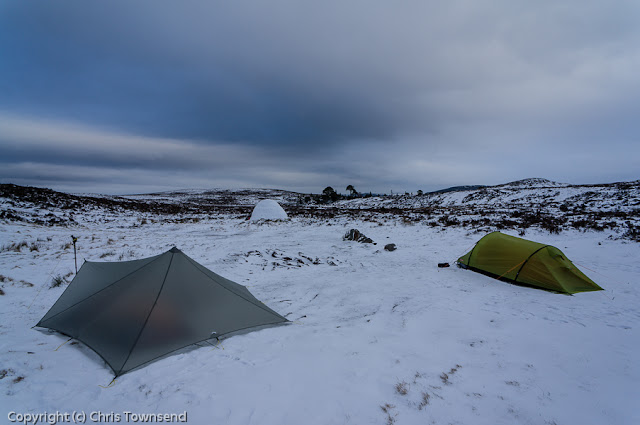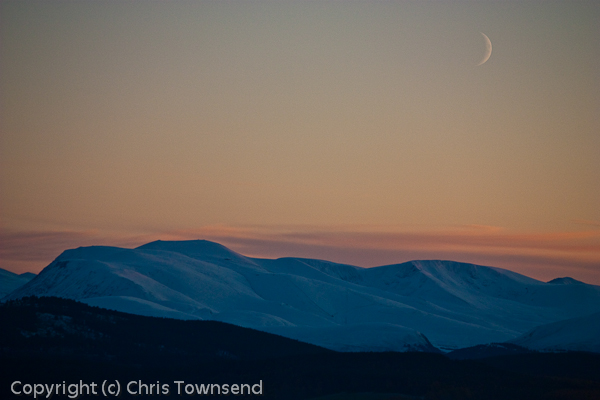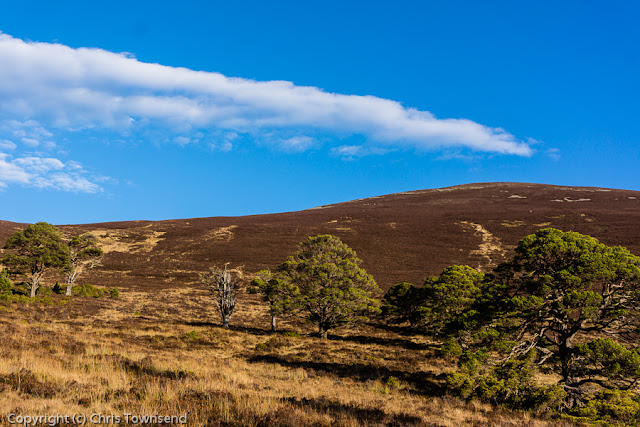 |
| Strath Nethy |
The days following the building of the igloo described in my
post for January 19 were stormy with high winds and much snowfall. Then on the
fifth day came a forecast for good weather – calm, clear, sunny – and I went
out to see how the igloo was faring and to climb Bynack More, the nearest high
mountain.
The immediate change from the previous visit was the snow,
which now lay deep and continuous. I set off on skis rather than on foot. Once
I climbed out of the trees I found many big drifts across the track, some of
them waist high. Walking would have been hard work. The weather however seemed
little different, with a cold wind whistling down from Cairn Gorm and ragged
clouds swirling across the sky. There was little sign of the sun.
 |
| Stac na h-Iolaire |
Skiing down the last little slope to the igloo I thought it
looked an odd shape. On reaching it I realised that one side was now inverted.
This side faced east and I can only assume there was must have been enough heat
in the rising sun one morning to cause it to sag. It was now frozen hard. The
inside still had room for a couple of people but didn’t look very appealing. I
had intended to spend the night here but now decided to ski on with all my gear
and maybe camp somewhere else.
Above, the very top of Bynack More was hidden in the clouds
and I could see spindrift blowing across the slopes. Climbing onto the broad
north shoulder of the mountain was arduous as there was much soft snow to
cross. The wind grew fiercer and colder. I met a walker coming down, the only
person I spoke to all day. He told me he’d reached the long rocky summit ridge
and then turned back as conditions were so atrocious. “I nearly turned back
earlier,” he said, “as some of the drifts were almost waist deep”. He looked at
my skis. “I need some of those”. He also told me that there was a surprising
lack of snow high up – “it’s all blown down into the forest”.
 |
| Do I really want to go up there? |
Looking up I could see large scoured areas of mountainside.
Choire Dhuibh, the big bowl between Bynack More and its lower neighbour Bynack
Beg that is the best ski route both in ascent and descent, only had patches of
snow. I would have to walk some sections, which wouldn’t be very comfortable in
my plastic ski touring boots. Carrying skis in strong winds isn’t that easy
either.
 |
| Bynack More |
I continued across the shoulder to the base of the corrie
and the northern ridge of the mountain. Clouds were still covering the sky and
the summit. The wind was tearing at my face. It would be arduous going higher
up, probably for little reward. My will wavered and I knew this was as far as I
was going. I’d been up Bynack More many times before. But today was not a day
for the summit. Turning I skied back down to the igloo. The snow was firm at
first, making for fast, easy skiing. Lower down it was softer and my skis broke
through so I slowed down and took care with turns. At the igloo I made a second
decision. With a forecast for stronger winds and heavy snow coming in overnight
I decided not to camp but to head out. So then it was back along the track in
the dusk watching a hazy moon coming and going in the racing clouds.
 |
| A hazy moon over Creag nan Gall |




























